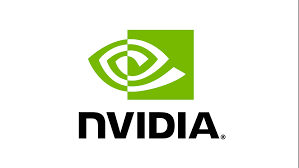It is happening so regularly that things are starting to get boring. Nvidia reported strong earnings and above-consensus guidance for the quarter, again. Then CEO Jensen Huang got on the call, and the stock went up more on his commentary, again. The numbers: the company reported 1Q25 revenue of $26 billion and EPS of $5.59, ahead of consensus of $24.5 billion and $5.59. They guided 2Q25 revenue to $28 billion versus consensus of $26, and EPS of ~$6.30 versus $6.12. These are big numbers by any metric. Oh, they also announced a 10 for 1 stock split, catnip for retail investors.
It is hard to grasp how large and how quickly Nvidia has grown. Our preferred metric currently is Nvidia’s share of wallet for data center processors, looking at Nvidia, Intel and AMD’s reported data center revenue. That figure reached 81% in the quarter. They took a point of share from AMD and five points from Intel.

In fairness, Nvidia’s data center revenue includes networking products such as Infiniband. Conveniently, the company began breaking out their data center networking revenue. In theory, we should remove that from the calculation as neither AMD nor Intel have comparable products. That being said, that spend is coming from the same set of customers. And even stripping it out only takes their share to 78%. To put that in context, Arista, a company that only sells networking products, did $5.3 billion in revenue for all of 2023.
A few other things stood out for us on the call. The company claims they are now supplying 100 “AI Factories”, these are data centers operated independent of the hyperscalers. We wrote about these a few months back, and we remain somewhat cautious about the subject. There is nothing wrong with Nvidia’s numbers, but when there are we will likely see that telegraphed from this sector. It is worth noting that many of these AI factories turn around and re-sell capacity to the hyperscalers, which is a bit circular. We also are uncomfortable with the fact that Nvidia seems to have an extra-heavy hand with these companies. Nvidia is their major supplier, really the basis of their business model in these times of tight supply of GPUs. Nvidia also seems to sell their whole stack to them, complete systems, and likely designs them as well. On top of all that, Nvidia is likely an investor in many of them.
The company also added some color to their commentary about “Sovereign AI” which they are now defining as “a nation’s capabilities to produce AI using its own infrastructure”. The emphasis this quarter was on AI factories built in conjunction with telecom networks, such as Japan’s $740 million investment in a project led by telco KDDI, Sakura Internet and Softbank, to build up that country’s “AI Infrastructure”. This is another area that makes us a bit uncomfortable. A market segment built on government’s building Ai capabilities, it is all just a bit too vague. On the other hand, it is clearly generating a lot of revenue for the company.
Probably the most asked about topic on the call was the extent of demand. The company indicated they expect demand to outstrip supply well into next year. Going into the call, there were concerns that the company’s new Blackwell line of GPUs would cannibalize sales of the previous generation Hopper chips. The short answer to that is there does not seem to be a problem, with the company becoming even more supply constrained for certain Hopper products during the quarter. When asked how customers feel about current purchases when they see new products coming to market, Huang replied they will “Performance average their way into it.” Which is his way of saying customers will buy whatever they can get their hands on. We actually heard a better explanation today which goes along the lines that customers know Nvidia’s roadmap and are building plans around that. They will use B200 when they can get some and H100 when they can’t.
We should also point out that if we turn this argument around, Nvidia is developing products at an enviable pace, and deserve credit for the advances they are driving. Of key importance here is the fact that Nvidia has to contend with the slowdown in Moore’s Law as much as anyone else, but they are still driving performance gains by pulling every lever they can. This includes their comprehensive design of data centers, and their complete systems approach. This could end up being a strong force working in the company’s favor over the long term as currently no one else (outside the top hyperscalers) has the ability to pull all those levers.
All in all, Nvidia continues to execute strongly on all cylinders. We know where to look for problems but there are currently no signs of trouble on the horizon. Demand remains very strong, and the company looks set to outpace the competition for the foreseeable future.




Leave a Reply